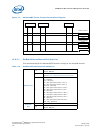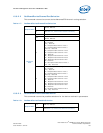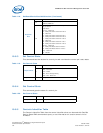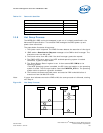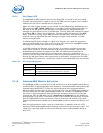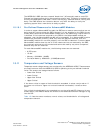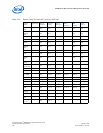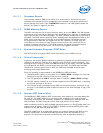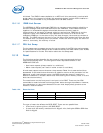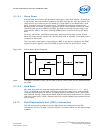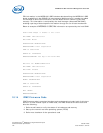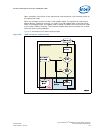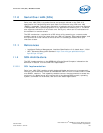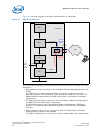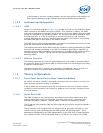
MPCBL0010 SBC—Hardware Management Overview
Intel NetStructure
®
MPCBL0010 Single Board Computer
Technical Product Specification October 2006
140 Order Number: 304120
initialized. The IPMC firmware defaults to no ACPI until this command is received with
proper data in the request to indicate the operating system is either ACPI-enabled or -
disabled. This command is only executable over the SMS channel.
10.11.6 IPMB Link Sensor
The MPCBL0010 SBC provides two IPMB links to increase communication reliability to
the shelf manager and other IPMI devices on the IPMB bus. These IPMB links work
together for increased throughput where both buses are actively used for
communication at any point. A request might be received over IPMB Bus A, and the
response is sent over IPMB Bus B. Any requests that time out are retried on the
redundant IPMB bus. In the event of any link state changes, the events are written to
the SEL. The IPMC monitors the bus for any link failure and isolates itself from the bus
if it detects that it is causing errors on the bus. Events are sent to signify the failure of
a bus or, conversely, the recovery of a bus.
10.11.7 FRU Hot Swap
The hot swap event message conveys the current state of the FRU, the previous state,
and a cause of the state change as can be determined by the IPMC. Refer to the PICMG
3.0 specifications for further information about the hot swap state.
10.12 Reset
The following sections describe the two types of reset requests and the boot
relationships among them. The two types of reset requests available on the
MPCBL0010 SBC are:
• Hard reset request (always results in a cold boot)
• Warm reset request (can result in either a warm or cold boot)
A hard reset request occurs whenever the processor Reset line is asserted and then
deasserted. A soft reset occurs whenever an assertion occurs on the processor Init line.
Whenever a soft reset request occurs, the BIOS checks two memory locations to
determine whether to initiate a warm boot while leaving main memory intact or a cold
boot that clears memory.
The reset button on the front panel is an input to the IPMC. There are also IPMI
commands to reset the board and change power states through the software. However,
the reset button is a last resort because the user must be physically present at the
chassis to reset the board.
The type of reset also affects the BIOS POST. There are two possibilities:
• A hard reset (or power-up) does a full BIOS POST.
• In warm reset, the memory count/test/clear is skipped. Also, check-point 0D0h to 0D4h boot
block is skipped.
Table 124. Reset Actions
Reset Action System Function Memory Status
Warm boot Partial restart Preserves memory above 8MB boundary.
Cold boot Full restart Functionally equivalent to a hard reset.



